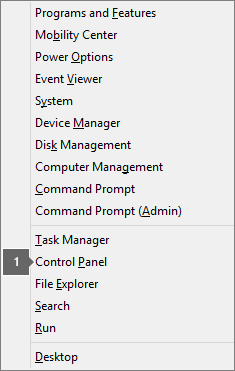We check periodically to make sure your Microsoft 365 subscription is still active. You're seeing this message because we're having trouble verifying your subscription. This could be caused by:
-
Network connectivity problems
-
Temporary service outages
-
Firewall or antivirus issues
You can keep using Office while we try to verify your subscription. If the error appears for more than 24 hours, please use the Support and Recovery Assistant app to troubleshoot this issue.
Run the Support and Recovery Assistant
-
Select the Download button below.
-
Select your browser from the drop-down list to see how to save and then start the Microsoft Support and Recovery Assistant.
Select your browser- Select your browser
- Edge
- Internet Explorer
- Chrome
- Firefox
-
At the top of the browser window, select Open file.
-
In the next box that indicates SetupProd_Act.exe is finished downloading, select Run.
-
At the bottom of the browser window, select Open to open the SetupProd_Act.exe file.
If the file doesn’t open automatically, choose Save > Open Folder, and then double-click the file (it should start with "SetupProd_Act.exe").
-
In the lower-lower left corner select the SetupProd_Act.exe file and from the drop down, select Show in folder.
Double-click the download, SetupProd_Act.exe.
-
Select Save File, and then OK.
In the upper-right browser window, select Show all downloads. In the Library, select Downloads > SetupProd_Act.exe, and then select the folder icon. Double-click SetupProd_Act.exe.
-
The Application Install dialog box opens. Select Install to start the installation.
-
The Microsoft Support and Recovery Assistant opens in a new window. Select I agree to accept the Microsoft Services Agreement.
-
Select Yes to allow the app to make changes to your device.
-
Follow the prompts to troubleshoot your Office activation issue.
Did the Support and Recovery Assistant fix your issue?
Troubleshoot activation failures
Try the steps below to fix issues that could prevent us from verifying your subscription.
Check your computer's date, time, and time zone
Follow the steps below for your operating system.
Windows 10
-
Close all Office apps.
-
In the bottom right-hand corner of your screen, select the date or time.
-
Select Date and time settings.
-
Select Set time automatically and, if shown, Set time zone automatically. If you don't have the option to set the time zone automatically, make sure your local time zone is shown in Time zone.
-
Restart any Office app.
Windows 8 or Windows 8.1
-
Close all Office apps.
-
In the bottom right-hand corner of your screen, select the date or time.
-
Select Change date and time settings.
-
If the date or time is wrong, select Change date and time and correct the date and time settings.
-
If the time zone is wrong, select Change time zone and select your local time zone.
-
Restart any Office app.
Windows 7
-
Close all Office apps.
-
In the bottom right-hand corner of your screen, select the date or time.
-
Select Change date and time settings.
-
If the date or time is wrong, select Change date and time and correct the date and time settings.
-
If the time zone is wrong, select Change time zone and select your local time zone.
-
Restart any Office app.
Tip: In Windows 7, you can synchronize your computer clock with an Internet time server to keep the computer clock up to date. To do this, select the date or time in the bottom right-hand corner of your screen, and then select Change date and time settings. Select the Internet Time tab, select Change settings, select Synchronize with an Internet time server, and then select Update now.
Check your firewall
If you're using a firewall from another manufacturer, visit the manufacturer's website for information about how to temporarily disable the firewall. For Windows Firewall, please see below.
Windows 11 and Windows 10
-
Please go to Turn Windows Firewall on or off.
Windows 8.1 and 7
-
Please scroll to Turn Windows Firewall on or off in Protect my PC from viruses.
Check your antivirus software
For information about how to turn off your antivirus software, check your antivirus manufacturer's website. Uninstalling your antivirus software may also help. Don't forget to reinstall it after Office is finished installing and if you turned it off, be sure to turn it on again.
If you're not sure which antivirus software you have, use the following instructions to get to Control Panel to find the name of your antivirus software.
Tip: Windows 10 comes with default antivirus software, Windows Defender. If you determine that you're using it, select the Start button > Settings > Update & Security, and then select Windows Defender on the left. Slide the button to Off. Remember to turn it On again.
- Select your operating system
- Windows 11 and Windows 10
- Windows 8.1
- Windows 7
-
On the Start

-
Do one of the following:
-
In Category view, select System and Security > Security and Maintenance, and then select the down arrow next to Security.
-
In Large icons or Small icons view, select Security and Maintenance, and then select the down arrow next to Security.
-
If Windows can detect your antivirus software, it's listed under Virus protection.
-
Go to the Control Panel by right-clicking the Start button


-
Do one of the following:
-
In Category view, select System and Security > Action Center, and then select the down arrow next to Security.
-
In Large icons or Small icons view, select Action Center, and then select the down arrow next to Security.
-
If Windows can detect your antivirus software, it's listed under Virus protection.
-
Go to Control Panel by choosing the Start button

-
Do one of the following:
-
In Category view, select System and Security > Action Center, and then select the down arrow next to Security.
-
In Large icons or Small icons view, select Action Center, and then select the down arrow next to Security.
-
If Windows can detect your antivirus software, it's listed under Virus protection.
Check your proxy settings
If you use your device both at home and at work, try turning off the proxy settings in Microsoft Edge or Internet Explorer before you install Microsoft 365. If you’re using a different browser, check their help to find out how to turn off proxy settings.
Microsoft Edge
-
Click the Start button

-
Select Network & Internet, go to the bottom of the selections on the left side, and click Proxy.
-
In Automatic proxy setup, automatically detect settings or use setup script, by sliding to On or Off.
-
In Manual proxy setup, you can choose to use a proxy server. Generally, it will be off and if you slide it to On, be sure to select Save. And if it was off by default before you turned it on, be sure to slide back to Off when you've finished using it.
Internet Explorer 7, 8, 9, 10, or 11
-
In Internet Explorer, click Tools (upper-right corner) > Internet options.
-
Click the Connections tab, and then click the LAN settings button.
-
Under Proxy server, clear the option "Use a proxy server for your LAN (These settings will not apply to dial-up or VPN connections)."
-
Click Apply and OK to save changes. Restart your computer.
Note: There might be more proxy settings that you need to bypass. If this doesn't work, and you’re installing Office from work or school, check with your IT department for more information. For IT administrators, please see Microsoft 365 URLs and IP address ranges.
Contact support
If you tried the troubleshooting steps and you still see this error, please contact Microsoft support for assistance.
Great, glad we helped
Thanks for letting us know that the Support and Recovery Assistant fixed your issue.











